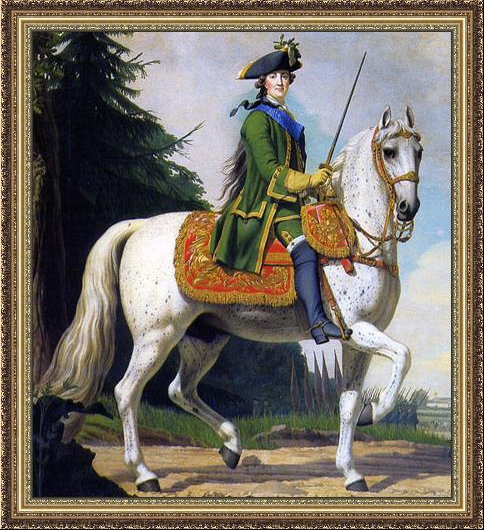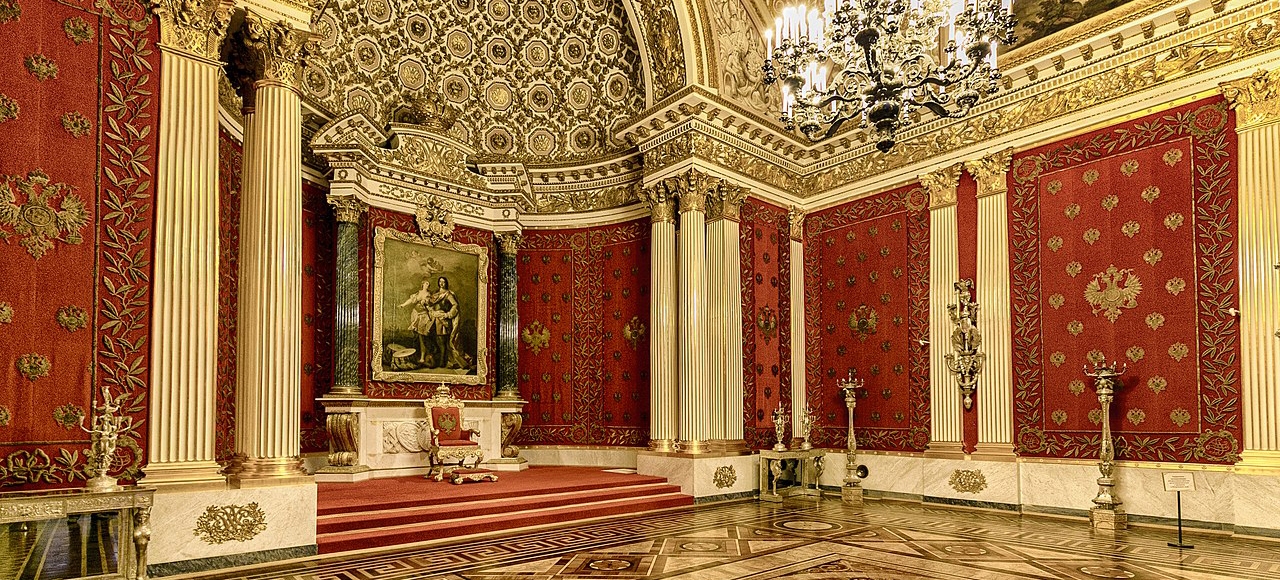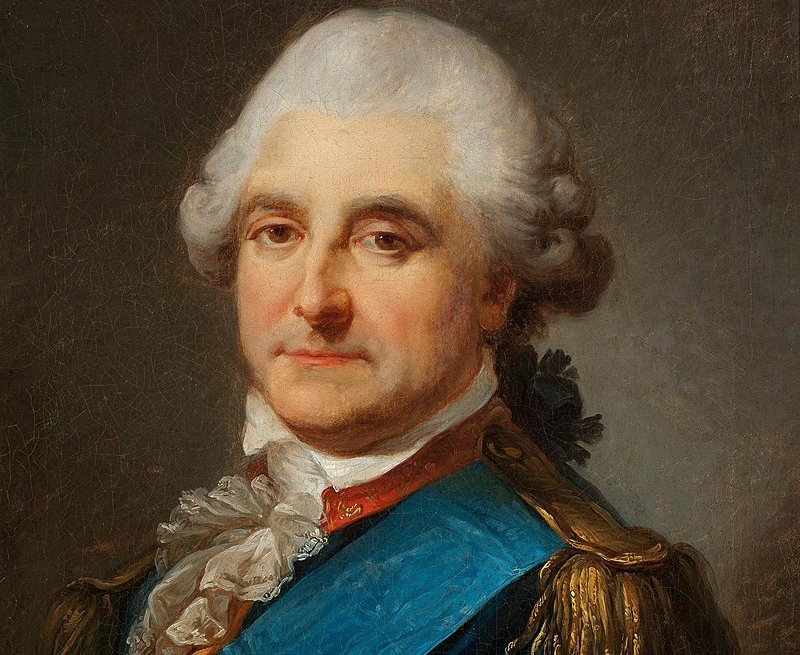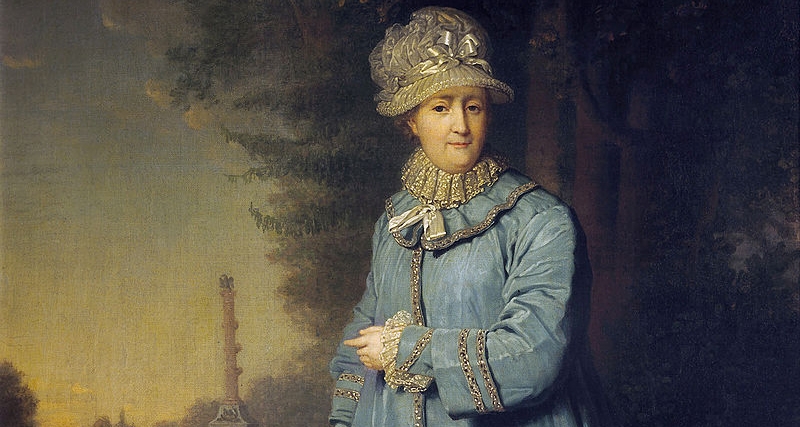Table of Contents
Background
Catherine the Great, also known as Catherine II of Russia, was raised in a patriarchal society. She was groomed to be married in order to improve the social and economic standing of her family, but she would overcome all odds by renunciating her Lutheran heritage and ousting her husband on her route to the Russian throne. The Catherinian Era, which she oversaw, saw the modernization of Russia’s economy and the revitalization of its culture. Catherine is credited with making Russia one of the world’s superpowers during what is known as the “Golden Age” of the nation [1]. Continue reading to know more about how Catherine the Great became so great.
Who was Catherine the Great?
Sophie Friederike Auguste, Prinzessin von Anhalt-Zerbst, better known as Catherine the Great or Catherine II, Yekaterina Velikaya or Yekaterina Alekseyevna in Russian names, was born in 1729 in Stettin, Prussia (now Szczecin, Poland) [2]. She was the eldest daughter of a poor Prussian royal, and because of her mother’s aristocratic lineage, she had many marriage opportunities [3]. Catherine was also deemed as a minor German princess, since his father, Christian August, Prince of Anhalt-Zerbst, belonged to the ruling German family of Anhalt [2].
Czarina Elizabeth, the daughter of Peter the Great, who had taken over the Russian throne in a coup just three years earlier, sent an invitation to 15-year-old Catherine the Great to visit Russia in 1744. Elizabeth, who was never married and had no children, had designated her nephew Karl Peter Ulrich as her heir, and he was now looking for a bride. Sophie had an immediate influence on Elizabeth, thanks to her ambitious mother’s well-trained ways and desire to please. The couple wed on August 21, 1745, and the bride—who was then newly converted to Orthodox Christianity—became known as Ekaterina, or Catherine [3].
When Elizabeth passed away in January 1762, her nephew Karl Peter Ulrich was hailed Peter III and became king along with Catherine as queen. He was called Peter III since there were two of his predecessors: Peter I, also known as Peter the Great, who ruled from 1682-1725, and Peter II, who ruled from 1727-1730 and is the only male-lined grandson of Peter the Great. In an effort to make his mark on the country, Peter III swiftly put a stop to Russia’s conflict with Prussia, which greatly angered the country’s military elite. Members of the lower nobility were alienated by a liberal domestic reform agenda that was intended to improve the lives of the poor. These frustrated groups sought to Catherine, who shared their concern about Peter’s motives. As the tension increased, a plot to assassinate Peter developed. When the plot was discovered in July 1762, Catherine acted fast to get the allegiance of the nation’s most powerful military unit and set up her husband’s arrest. Six months after taking the czarship, on July 9, Peter stepped down, and Catherine was declared the sole monarch. Peter was assassinated on the 17th; 8 days after Catherine became the ruler [3]. She was installed as empress of Russia under the name Catherine II in September 1762 after being crowned with great enthusiasm in Moscow, the former capital of the czar [2].
What Made Her So Great?
Russians still hold Catherine in high respect and are proud of her even though she was not a Russian. Catherine’s reputation among non-Russians is less favorable. She was portrayed in the Western mind as the embodiment of the vast, undeveloped, but forbidding country she controlled because Russia under her leadership became powerful enough to pose a threat to the other major nations and because she was in reality an oppressive and ruthless leader. One of Catherine’s greatest accomplishments was to be a person who, like Queen Victoria and Elizabeth I of England, gave their names to historical eras, and who became associated with a pivotal moment in her nation’s development [2].
Catherine as a Great Ruler
Longer than any other woman in Russian history, Catherine the Great ruled Russia for 34 years. She paved the way for her nation’s integration into European politics and culture [1]. The enlightenment in Europe had a significant impact on Catherine. Catherine shared Peter the Great’s desire for Russia to be a modernized, western country with strong ties to Europe. She even made an effort to promote education, particularly for young women. In order to improve Russia’s educational system, she produced a large number of books, booklets, and instructional materials [3].
Catherine amassed a sizable art collection while assisting artists [8]. When Catherine the Great bought a collection of 255 paintings from Berlin, Germany, the Hermitage Museum was established in 1764. Currently, there are more than 2.7 million exhibits in the Hermitage, which features a wide variety of works of art and artifacts from all over the world and throughout history – from Ancient Egypt to the early 20th century Europe. The collections of the Hermitage include works by Leonardo da Vinci, Michelangelo, Raphael, and Titian, as well as a special collection of Rembrandts and Rubens, numerous French Impressionist pieces by Renoir, Cezanne, Manet, Monet, and Pissarro, a sizable number of canvases by Van Gogh, Matisse, and Gaugin, and a number of Rodin sculptures. The Hermitage Museum is one of the biggest and most renowned art museums in the world and the largest art gallery in Russia [9].
Military and diplomatic achievements were her reign’s main victories. The Russian Empire expanded by almost 200,000 square miles while she was in control. Russian nationalists view Catherine as a hero, if for no other reason, for this [8]. Russia’s borders during Catherine’s authority extended all the way to Alaska in the far east, the Black Sea in the south, and Poland in the west [7]. During her reign, 400,000 people per year die from smallpox. In order to show the court that the treatment was secure and capable of saving lives, Catherine had a smallpox vaccination in 1762 [4].
While Catherine had a significant role in modernizing Russia in the style of Western Europe, she did little to alter the serfdom system. Russian serfs were not technically slaves in the 18th century because they were owned rather than chained to a piece of land. Catherine took steps to alter this system, signing legislation to outlaw it and even writing a declaration in 1775 that prevented former serfs from reverting to enslavement. However, Catherine also gave away many state-owned peasants to become private serfs and restricted many peasants’ freedoms [4].
The most serious of the numerous uprisings that posed a threat to Catherine’s authority occurred in 1773, when a gang of Cossacks and peasants led by Emelyan Pugachev rose up in opposition to the oppressive socioeconomic conditions experienced by Russia’s lowest class, the serfs. Pugachev’s Rebellion, like many of the upheavals Catherine faced, questioned the legitimacy of her rule. Former army commander Pugachev asserted that he was actually the overthrown Peter III and hence the legitimate heir to the Russian throne. Within a year, Pugachev had amassed tens of thousands of followers and had conquered a sizable area, including the city of Kazan. At first indifferent by the uprising, Catherine quickly reacted with great force. Pugachev’s supporters eventually turned on him when he was confronted by the strength of the Russian army, leading to his capture and public execution in January 1775 [3].
Catherine as a Great Lover
Both during and after her relationship ended, Catherine was renowned for being devoted to her partners. She always ended their relationships on amicable terms, bestowing them with titles, lands, palaces, and even people—giving one ex-lover more than 1,000 serfs, or indentured servants.
Stanislaw Poniatowski, one of her early lovers and the father of one of her children, may have benefited from her favor more than anyone else. Poniatowski, a member of the Polish aristocracy, met Catherine (who was not yet the monarch) while serving in the British embassy in St. Petersburg. They remained close even after a scandal that was partially sparked by their connection forced him to leave the Russian court. Long after their love had ended and a year after she had taken the throne, Catherine successfully backed Poniatowski in his bid to rule Poland in 1763. But after ascending to the throne, the new king, whom Catherine and other people had feared would be little more than a puppet for Russian interests, started a series of reforms aimed at enhancing his nation’s independence. The once-solid connection between the two ex-lovers quickly deteriorated [3].
Interesting Facts about Catherine the Great
For her prolonged and successful rule over the Russian Empire, Catherine the Great is renowned. Catherine guided military leaders, kept the balance of power, and led Enlightenment thought with amazing independence and unwavering self-assertion [5]. Here are some interesting details about the most influential woman of the 18th century.
- The name of Catherine the Great was not Catherine [3].
- She ruled over Russia, but is not even a Russian [3].
- Catherine’s childhood teacher was a military chaplain. Another well-known fact about Catherine is that she spoke German, French, and Russian reasonably well [5].
- Catherine was reported to be tone-deaf [5].
- Catherine assumed power through a coup [6].
- Catherine was a key figure in the Russian Enlightenment [6].
- She was a pioneer in medicine. She received a smallpox vaccination in front of the court to show that the process was safe and capable of saving lives [7].
- Catherine had a reputation for being a talented writer. She corresponded with famous people and wrote to Denis Diderot and French philosopher Voltaire [7].
- The majority of Catherine’s eight notable affairs were with younger men [7].
- By the time Catherine died, Russia had achieved global recognition and become a prominent force in politics and culture in Europe [5].
Conclusion
Despite her disastrous love life, Catherine the Great was a great ruler. She was one of the most fascinating figures in the history of 18th-century Russia and Europe and people continue to have interest in her biography still. The influence of Catherine the Great left a huge mark in Russian history, from her love of art, to education and politics. Indeed, Catherine the Great was great because she contributed to the growth and recognition of Russia a powerful nation.
References:
[1] Dingwall-Main, T. (2021, September 30). The reign of Catherine the Great. Retrieved September 07, 2022 from https://blog.bridgemanimages.com/blog/the-reign-of-catherine-the-great
[2] Oldenbourg-Idalie, Z. (2022, August 12). Catherine the Great. Encyclopedia Britannica. Retrieved September 07, 2022 from https://www.britannica.com/biography/Catherine-the-Great
[3] Maranzani, B. (2020, May 18). 8 Things You Didn’t Know About Catherine the Great. Retrieved September 07, 2022 from https://www.history.com/news/8-things-you-didnt-know-about-catherine-the-great/
[4] Konstantinovsky, M. (2020, May 11). 7 Reasons Catherine the Great Was So Great. Retrieved September 07, 2022 from https://history.howstuffworks.com/historical-figures/catherine-the-great.htm
[5] World History Edu. (2020, July 31). 15 Interesting Facts about Catherine the Great, Empress of Russia. Retrieved September 07, 2022 from https://www.worldhistoryedu.com/15-interesting-facts-about-catherine-the-great-empress-of-russia/
[6] Loxton, A. (2019, November 19). 10 Facts About Catherine the Great. Retrieved September 07, 2022 from https://www.historyhit.com/facts-about-catherine-the-great/
[7] Nicolau, E. (2019, October 17). Who Was Catherine The Great — & What Made Her So Great? Retrieved September 07, 2022 from https://www.refinery29.com/en-us/2019/10/8579561/who-was-catherine-the-great-russian-empress-hbo-show
[8] Kersey, P. (2021, August 10). What’s So “Great” About Catherine II? Retrieved September 14, 2022 from https://www.infoplease.com/history/world/catherine-the-great
[9] Saint Petersburg. (n.d). The State Hermitage Museum. Retrieved September 14, 2022 from http://www.saint-petersburg.com/virtual-tour/hermitage/






